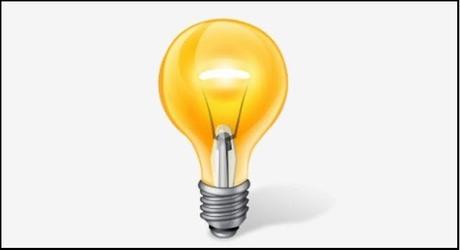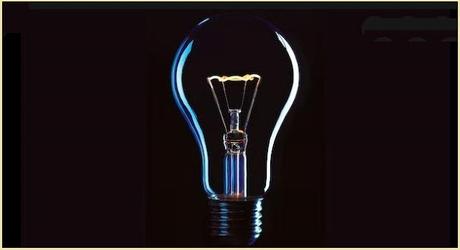Thomas Edison is popularly credited with creating the first practical incandescent lightbulb (as well as with inventing the phonograph/record player) but the reality is way more complicated than that, for there was a long line of enterprising developments leading up to his patented electric bulb in 1880.
Step forward Ebenezer Kinnersley who first heated a wire to incandescence in 1761, Humphrey Davy who used battery power to make a thin strip of platinum glow in 1802, Marcellin Jobard who developed a glass bulb housing a vacuum and a glowing filament in 1838; and then Warren de la Rue, Frederick de Moleyns and Moses Farmer who all by mid-century, following Davy, had created their own incandescent bulbs using platinum filaments - though the use of such an expensive metal would render them impractical for mass-production.
In Russia, Alexander Lodygin developed and patented an incandescent bulb filled with nitrogen and using carbon filaments. In Canada in 1874 Henry Woodward and Matthew Evans developed and patented a similar lamp consisting of carbon rods in a nitrogen-filled bulb, but they were unsuccessful in commercialising their design and eventually sold their patent in 1879 to Edison, who refined the design of the lightbulb and presto! Sort of.

on
For in parallel with developments in North America, back in the old world in the 1870s Alessandro Cruto in Italy developed the first lightbulb with a synthetic filament. This gave a whiter light and lasted much longer than Edison's bulb (500 hours compared to 40) but it was some years before he was able to make it commercially available and it was relatively expensive; and in the UK physicist Joseph Swan was developing his design for an incandescent bulb using carbonised paper and then carbonised cotton filaments in a vacuum. In fact his own home in Gateshead was the first in the world to be lit by incandescent lightbulb, and he went on to patent, commercialise and produce Swan lightbulbs, quickly achieving other notable firsts: Mosley Street in nearby Newcastle became the first street anywhere in the world to be lit by incandescent lightbulbs in February 1879, and the Savoy Theatre in London became the first public building to be lit entirely by electricity in 1881. Swan poetically termed it "extending the day", such was the sheer power of the electric lightbulb in comparison to gas or oil lamps or candelbra.Edison had some catching-up to do but he commercialised his patent, went into production and the 1893 World Fair in Chicago was lit up by some 16,000 of his electric lightbulbs. With Edison holding patents in the USA and Swan in the UK, rather than wage commercial and patent war with each other, the two inventors elected to merge their enterprises as EdiSwan (later Thorn Electricals) and forged ahead to great success with continued enhancements to the electric lightbulb, such as tungsten filaments and inert gas fills.
And Blackpool? you ask. What's the story there? In 1879 the council voted £5000 for the purpose of installing eight electric arc lamps on 60ft poles at intervals along the promenade, all powered by individual steam-engine dynamos. The lamps were first turned on in September 1879, just months after Mosley Street and several months before Edison patented his bulb. This event was billed as the world's first 'annual lights festival' and people were invited to come and marvel at Blackpool's "artificial sunshine", an attraction that pulled intrigued crowds in their thousands, like moths to a flame, and established a tradition that went on to become the famous Illuminations.
I'm sure you've all seen those stunning satellite images of the planet at night with huge swathes of western Europe, north America and the far East glowing in the darkness as trillions upon trillions of electric lightbulbs burn brightly in homes, offices and thoroughfares. It's enough to make birds sing all night and greenhouse gases overheat our fragile planet. Such wasteful extravagance. So I'm campaigning for a less-bright future.

off
Turn it down, turn it off, embrace the concept of indoor twilight with pools of light in place of wall-to-wall glare, make friends with a shadow. The four spotlights in my bathroom ceiling all failed within days of each other (as they do) in the summer of 2021. I've never replaced them. It's natural light or none at all in there now and not a problem. Save electricity every which way and we might just save the planet before it blows an almighty fuse.To conclude, this latest from the imaginarium has about as tenuous a link to the week's theme as a lightbulb's filament... On/OffIn the hush and the half-light of palliative care ward eight,as the blip of your bedside monitor perfectly synchroniseswith the flashing of that Belisha beacon through the blindsreminding that there is a world out there, and life still afterdeath, time - bound by it as we are - to reflect a while upon elemental questions: did the universe somehow self-create?Miraculously from nothing? Alchemy of stardust evolvingover aeons into galaxies, planets, vegetation, animals some of whom learned how to farm, fish, fornicate, build housesand hospitals, navigate via stars, fashion complex machines, even find time to meditate the issue of autonomy versus fate.Or what? A great creator? Maybe one who abdicated leaving
what (s)he'd set in motion to its own devices. Does it matteras long as we've fuel to burn, power to keep things turning?Ah yes, but diseases and early deaths. How do those comply
with any great cosmic scheme? Don't they signify some flawof design, the fly in the ointment, canker in the apple, cancerin the blood, tumour in the brain such as brought you to me?
Who am I to answer? I'm simply your life-support machine,an artificial intelligence composing chance verses on the sly. Turn me off and I'll take you with me into that dark forever.
Thanks for reading, S ;-) Email ThisBlogThis!Share to TwitterShare to Facebook
